Description
China (13D12N) – From Lhasa to Everest Base Camp
Day 01: Arrival in Lhasa
Day 02: Lhasa
Day 03: Lhasa
Day 04: Lhasa – Zedang
Day 05: Zedang – Yamdrok – Gyantse
Day 06: Gyantse
Day 07: Gyantse – Sakya
Day 08: Sakya – Everest
Day 09: Everest – Shigatse
Day 10: Shigatse
Day 11: Shigatse – Namtso
Day 12: Namtso
Day 13: Departure from Lhasa
Day 01. Arrival in Lhasa (altitude of 3,700 meters)
Begin this Lhasa to Everest Base Camp tour with an arrival into Lhasa: the administrative, political, and religious capital of Tibet. While the city is divided into Chinese and Tibetan halves, the majority of this trip will explore the Tibetan portions of the city.
A guide and driver will be waiting upon arrival to provide transport to the hotel. Take some time to relax at the hotel and get acclimated to the major change in altitude.
If arriving by plane from Shangri-La (in Yunnan) or from Qinghai province by train, an altitude adjustment period is not necessarily required.
Note: Lhasa is considered the “Roof of the World.” As such, it is imperative to bring sunscreen, lip balm, sunglasses, and to stay regularly hydrated. It is also strongly recommended to consult a doctor before taking this journey. Climbing exceedingly high altitudes (reaching up to 5,000 meters) is not suitable for all travelers.
Depending on the location of the chosen hotel, it is possible to walk into town or get a short drive into town. Enjoy lunch in a restaurant with beautiful views of Barkhor and the Jokhang Temple.
For immediate immersion into the Tibetan world, pay a visit to the 8th century, Nepalese & Indian-inspired Jokhang Temple. The most venerated religious site in Tibet, the temple draws in a crowd of pilgrims each day, beautifully reflecting the diversity present in the demography of Tibet. Pilgrims travel the Barkhor (or “kora”), or the pilgrimage routes that circle sacred sites, all the while spinning prayer wheels and tirelessly prostrating themselves in front of the temple doors.
Experience the mysterious world of Tibet immediately upon entering the temple, which is dimly lit by hundreds of candles and filled with the smell of yak butter and the sounds of monks’ chanting. While there are 3,000 icons of Buddha, deities, or historical figures throughout the temple, it’s the golden statue located at the heart of the temple that stands as the most impressive.
Continue with a walk-through Lhasa’s old town, providing the first opportunity to scout out some amazing souvenirs on display in the region. From Tibetan hats and incense to Thangkas (intricate Buddhist paintings), precious stones, and fine jewelry, there are some truly amazing and unique items. We will provide a visit to handicrafts shop where gifts are both unique and locally sourced.
Estimate distance and journey time:
Lhasa airport– Lhasa city (60 km): approx. 1 h
*Depends on local situation (the weather/construction/traffic jam, etc…), may take longer
Overnight in Lhasa
Meal(s): Lunch
Day 02. Lhasa
Begin the morning with a visit to the Potala Palace, the one-time residence of the Dalai Lama (religious head and political leader of Tibet). A true architectural masterpiece, the Palace magisterially overlooks the whole city of Lhasa from its 130m vantage point. While King Songtsen Gampo constructed a small palace here in the 7th century, it was in 1645 under the reign of the fifth Dalai Lama that the Potala Palace took its current form. The Palace is composed of two main buildings: the Red Palace, the religious center housing the impressive bejeweled gold chortens containing relics belonging to previous Dalai Lamas, and the White Palace, home to the private apartments of the 13th and 14th Dalai Lamas (the latter fled to India with the arrival of the Chinese army in 1959). About three hours should be set aside for visiting the palace’s labyrinth of staircases, apartments, ceremonial rooms, and chapels.
Continue beside the palace on a portion of the Kora to get a full appreciation of the enthusiasm and endurance of the pilgrims who still consider the Potala as a major sacred site… despite the absence of its principal resident.
While there are several sects of Tibetan Buddhism, perhaps the most well-known is the Yellow Hat Sect (Gelugpa); three of its most important religious centers are found within the Lhasa area.
Begin with a visit to the Sera Monastery (located 5km from the city center). While the monastery used to house 5,000 monks, 600 still live and study here, devoting every afternoon from 15:30 to 17:00 (except for Sundays out of principle) to their famous religious debates- true examples of verbal sparring.
Return to the hotel. Overnight in Lhasa.
Estimate distance and journey time:
Lhasa Potala Palace – Sera monastery (7 km): approx. 15 min
*Depends on local situation (the weather/construction/traffic jam, etc…), may take longer
Overnight in Lhasa
Meal(s): Breakfast
Day 03. Lhasa – Ganden (3,900 meters) – Lhasa
Begin the day with a visit to the Drepung monastery, the third of the trio of Gelugpa temples. The monastery was built in the 15th century and was believed to be the largest in the world with a community of 7,000 monks. The remains of the second, third, and fourth Dalai Lamas are here; the fifth lived here before taking up his residence in Potala.
Next stop is the original monastery and stronghold for the Gelugpa sect: Ganden monastery. Established in 1416 by Tsongkhapa, the monastery is literally stuck on top of a hill overlooking the whole of the Kyi-Chu valley. Innumerable religious texts can be found in its various chapels, hand copied each day by the monastery’s “printers.” Pay a visit to these studious monks, conscientiously copying around 500 pages of text a day – the equivalent of around five books! Mix in with the crowd of pilgrims along the kora, offering wonderful views of the monastery and the valley below. Transfer back to Lhasa.
Note: it is advised that this trip is undertaken after an acclimation period of two or three days. Ganden monastery is located at around 3900m altitude, 200m higher than Lhasa.
Estimate distance and journey time:
Lhasa city – Ganden monastery (approx. 40 km): 1h30
Ganden monastery – Drepung monastery (approx. 65 km): 2 h
Drepung monastery – Lhasa city (approx. 13 km): 20 min
*Depends on local situation (the weather/construction/traffic jam, etc…), may take longer
Overnight in Lhasa
Meal(s): Breakfast, Lunch
Day 04. Lhasa – Zedang (3,600 meters)
Begin the morning with a journey to Zedang, where King Trisong Detsen built the Samyé Temple (the first temple of Tibet) in 775. The majority of the journey will run alongside the dune-lined Yarlung Tsangpo River, (also known as the Brahmaputra River). Take note of the bridges spanning the river, illustrated by the iconic Tibetan prayer flags- a constant symbol of the faith of the Tibetan people.
Transport will be provided to the hotel, followed by a visit to the temple (located around forty minutes along the road across the Yarlung). The temple’s architecture is particularly of note, designed in the form of a mandala or Tibetan ‘circular diagram.’ In Buddhism the mandala corresponds with an incredibly complex form of 2D or 3D artwork, the production of which is an elaborate form of meditation. Its central structure represents Mount Meru (the symbolic center of the universe for Hindus and many Buddhists), while the smaller peripheral temples represent the oceans and continents. The three floors of the temple mirror the three-way relations between Tibet, China and India.
Note: while it may seem logical to do this visit on the outward journey, it is necessary to first go to Zedang to obtain a visit permit for the temple.
At the end of the day, pay a visit to Yongbulakhang. A small “castle” perched on a nearby hill, this is the oldest building in Tibet, built by Nyatri Tsenpo, the founder of the kingdom and its first sovereign. It takes a good half-hour to complete the climb to the viewing platform, which offers spectacular vistas of the Yarlung valley and its checkerboard pattern of crops.
Estimate distance and journey time:
Lhasa city – Zedang (approx. 170 km): approx 3h
Zedang – Samye temple (approx. 40 km): approx 40 min
Samye temple – Yongbulakhang (approx. 60 km): approx 1h15
Yongbulakhang – Zedang (approx. 14 km): 20 min
*Depends on local situation (the weather/construction/traffic jam, etc…), may take longer
Overnight in Zedang
Meal(s): Breakfast
Day 05. Zedang – Yamdrok – Karola – Gyantse (altitude of 5,000 meters)
Start Day 5 with an early rise for a day of traveling. Despite the long hours of the drive, the landscapes and passing scenery will be simply unforgettable. Follow the iconic Friendship Highway (linking Tibet to Nepal), which is where the Yamdrok Lake can be found. Soak in views of this blue mountain lake from the summit of the Kamba-la pass (altitude of 4800-5000 meters), with the dominating Nojin Kangtsang (7200 meters) looming in the background.
Enjoy a brief photo op with yaks or Tibetan Mastiffs (the “Tibetan Guard Dog”), formerly used as watchdogs by Nomadic Peoples in the Himalayas and as guard dogs in monasteries.
Continue the journey along the lake to Nagarze, where lunch will be had in the small town. Pay a visit to its small Samding Temple, which offers more great views of the lake.
Continue onwards to the Karola Glacier (altitude of 4960m), which at the start of the 20th century was the location of the highest battle in the history of the British Empire. The final stop will be at the Manla Reservoir which, aside from its stunning turquoise coloration, is of interest for its contents: the water than fills the reservoir comes from Yamdrok Lake – one of the most sacred lakes for the Tibetan people.
At the end of the day arrive in Gyantse. Previously an independent kingdom, this commercial crossroads on the trans-Himalayan route links central Tibet to Sikkim, a British trading post following the signing of the Treaty of Lhasa in 1904.
Estimate distance and journey time:
Zedang – Yamdrok Lake (approx. 200 km): approx 5h30
Yamdrok Lake – Gyantse (approx. 100km): approx 2h 30
*Depends on local situation (the weather/construction/traffic jam, etc…), may take longer
Overnight in Gyantse
Meal(s): Breakfast, Lunch
Day 06. Gyantse (altitude of 3,980 meters)
Begin the morning with a trip to the Pelkhor Chode (or “Palcho” Monastery), built in 1418 and surrounded by an impressive red rampart. The centerpiece of the site is the famous “Kumbum”, an architectural masterpiece of six tiered floors which once included 108 chapels (nowadays just fewer than 80); it is believed to be the largest chorten in Tibet.
The chorten was built in 1447 by the Prince of Gyantse, Tabten Kunzang, whose main residence is found in the hillside Dzong (“fortress”) located a few hundred meters away.
The Gyantse Dzong was partially destroyed during the British Younghusband Expedition in 1904, and today houses a small museum of “British Imperialism”. Visit to the fortress and the museum.
Wrap up the day with a walk in the Tibetan old town, which has miraculously avoided urban development and is probably the most authentic town in Tibet. Magisterially overlooked by the Dzong, it consists of a main road with perpendicular alleys bordered by traditional white Tibetan houses.
Spend the remainder of the day free at leisure; a great opportunity to purchase a rug in one of the workshops which make Gyantse famous.
Overnight in Gyantse
Meal(s): Breakfast
Day 07. Gyantse – Sakya (altitude of 4,280 meters)
Depart in the morning for Sakya, with a stop in Shigatse to acquire a permit for entry to Everest (this procedure takes around 30 minutes).
Pay a visit to the monastic city of Sakya, hub of the Sakyapa School and base of the Sakya Lamas who once ruled the entire kingdom of Tibet.
Visually the monastery is a Mongol-influenced fortress; its high defensive walls colored grey with vertical red and white stripes symbolizes the Bodhisattva trinity.
The monastery holds many treasures, from thangkas and mural paintings to Song Dynasty porcelain, ancient drums, and an incredibly valuable horn given by the Mongols. It is also known for its fabulous library; a part of whose contents were ordered by the infamous Mongol Emperor Kublai Khan. The imposing 10 meter high and 60-meter-long wall contains Buddhist writings, works of literature, and books on history, art, philosophy and math.
Take a walk through the old town neighboring the monastery and meet with a cutler; Sakya knives are renowned for their quality.
Note: There is a dance festival at the Sakya Monastery, generally held in January. Demonstrations are sometimes organized in the town outside of these dates; inquire for further information.
Estimate distance and journey time:
Gyanste – Shigatse (approx. 95 km): approx. 2h
Shigatse – Sakya (approx. 150 km): approx. 3h30
*Depends on local situation (the weather/construction/traffic jam, etc…), may take longer
Overnight in Sakya
Meal(s): Breakfast
Day 08. Sakya – Rongbuk (altitude of 5,000 meters) – Everest Base Camp
Depart in the morning for Tingri. Around noon, a lunch will be provided where the first grand views of Everest (8,848 meters) and neighboring Cho Oyu (8,153 meters) can be seen. After lunch, continue onto the Rongbuk Monastery, situated along one of the highest roads in the world (with an average of 5,000 meters in altitude and some parts at higher than 5,200 meters).
Note: the poor condition of the road and the high altitude make this section a little testing. It is imperative to be in top health (consulting a doctor before leaving for the trip is highly recommended.)
Continue on to visit the “highest temple in the world,” which offers unbelievable views of Mt. Everest and its north face- only visible from Tibet. While the structure itself is quite modest compared to some previous visits, its authenticity, charm, and amazing views fully compensate. The following day there may be a chance to attend the prayers of the monks inside the temple on the return journey.
After 20 minutes on the road, arrive at the base camp of Mount Everest. Known as Qomolangma in Tibetan and Zhufeng in Chinese, Everest sits on the border of Tibet and Nepal. For a truly authentic overnight experience, settle into a traditional nomadic tent, which generally consist of up to a dozen single beds arranged like a dormitory and a stove fueled with yak excrement. The tents do not have showers and the toilet facilities are two private (but simple) cubicles shared by the whole camp.
There is a post office at base camp, which is naturally the highest in the world.
Note: it is also possible to stay in a guesthouse closer to the Rongbuk Monastery or in Tingri. For those interested, please inquire further.
Swap the private vehicle and driver for a public bus that (in just five minutes) traverses the north face of the mountain. Take the bus back to camp or enjoy a scenic walk back (taking less than half an hour) to take in the grandiose surroundings. Dinner (traditional cuisine) and overnight in the tent.
Estimate distance and journey time:
Sakya – Tingri (approx. 135 km): approx. 3h
Tingri – Rongbuk monastery (130km): approx. 3h
Rongbuk monastery – EBC (4km): 20 min
*Depends on local situation (the weather/construction/traffic jam, etc…), may take longer
Overnight in the tent
Meal(s): Breakfast, Lunch, Dinner
Day 09. Everest Base Camp – Shigatse (altitude of 3,850 meters)
Start the day with one of the world’s most unforgettable experiences: sunrise over Everest. Follow this up with a very local breakfast, comprised of tsampa (a mixture of yak butter, tea and flour)- a staple dish in the Tibetan world.
Take the reverse route back to Shigatse, stopping for lunch in Lhatse.
Before arriving in Shigatse, stop for a visit to the Phuntsholing Monastery. One of the most notable features of the monastery is the Chenrezig statue located in its assembly hall; additionally, paintings on the monastery’s roof divulge the stories of the life of Sakyamuni. Behind the monastery is a ruined fortification providing stunning views of the valley.
Arrival in Shigatse towards the end of the afternoon. The remainder of the day is at leisure.
Estimate distance and journey time:
EBC – Lhatse (200km): approx. 5 h
Lhatse – Shigatse (160km): approx. 3h
*Depends on local situation (the weather/construction/traffic jam, etc…), may take longer
Overnight in Shigatse
Meal(s): Breakfast
Day 10. Shigatse
The second city of Tibet, Shigatse was once the capital of the Tsang kingdom, a rival to Lhasa’s dominance. The Tsang kings exercised their power from the Shigatse Dzong which, like the one in Gyantse, is built on the crest of a hill and overlooks the whole city. It is currently not possible to visit the Dzong.
Begin Day 10 with a visit to Tashilhunpo, a Gelugpa monastery (Yellow Hat Sect) founded in 1447 by the first Dalai Lama, who is buried there. The monastery became the seat of the Panchen Lama, the second most important person in Tibetan hierarchy after the Dalai Lama. While the monastery remains very active with a community of around 800 monks, the divergence between China and Tibet over the identity of the real Panchen Lama has led the 14th Dalai Lama (today based in Dharamsala) to “re-establish” Tashilhunpo in India.
The monastery is like a small village with its maze of paved alleyways. Spend some time exploring the region before visiting its principal structures and remarkable golden roofs. There is also an incredible Stupa of the 10th Panchen Lama, covered in several hundred kilos of gold and decorated with a multitude of precious stones. The Maitreya Chapel houses a 26-meter-high Buddha statue that took nearly ten years to make and required the work of several craftsmen.
After exploring the monastery, stroll through the Tibetan market, where the best views of the Shigatse Dzong can be found. The market is also a great opportunity to find some traditional jewelry, prayer wheels, and other typical Tibetan objects.
Overnight in Shigatse
Meal(s): Breakfast
Day 11. Shigatse – Namtso (altitude of 4,700 meters)
Start the day traveling out to Namtso Lake (the “celestial lake”), an immense stretch of turquoise water bordered by seemingly never-ending chains of snow-capped mountains. The region is a sacred place for pilgrims, who in past times would wait for winter to come before crossing the frozen lake with their supplies. Some of the bravest believers still complete a 15-day kora around Namtso, the highest lake in the world with a surface area greater than 500km2.
Pay a visit to the small Tashi Dor Monastery and walk along the lakeside.
Note: this part of the journey will again hit some altitudes of over 5200 meters. As such, it is important to save this visit for the end of the itinerary, providing ample time to acclimate to the altitude.
Estimate distance and journey time:
Shigatse – Namtso (350km): approx 7 h
*Depends on local situation (the weather/construction/traffic jam, etc.)
Overnight in a guesthouse close to the lake with basic facilities
Meal(s): Breakfast
Day 12. Namtso – Lhasa
Begin the morning with an ascent to the observation point of the ‘twin hills.’ Weather permitting, there will be a breathtaking sunrise over the lake.
Enjoy breakfast and begin the journey back to Lhasa.
Upon arrival to Lhasa, settle in to the hotel and afternoon is free at leisure.
Estimate distance and journey time:
Shigatse – Namtso (200km): approx.. 4h30
*Depends on local situation (the weather/construction/traffic jam, etc.)
Overnight in Lhasa
Meal(s): Breakfast
Day 13. Departure from Lhasa
After breakfast, wrap up this Lhasa to Everest Base Camp tour with transport (provided) to the airport for the departing flight. (There are currently direct flights to Beijing, Chengdu, Xi’an, Chongqing, Shangri-La or Kunming.)
Estimate distance and journey time:
Lhasa city – Lhasa airport (60 km): approx. 1 hr
*Depends on local situation (the weather/construction/traffic jam, etc…), may take longer
End of Services.
Meal(s): Breakfast


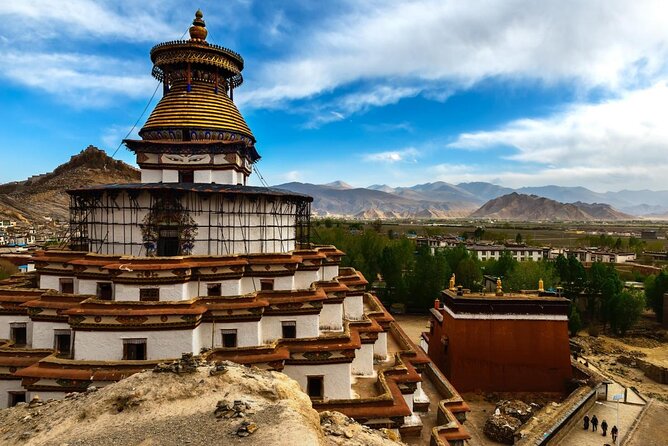

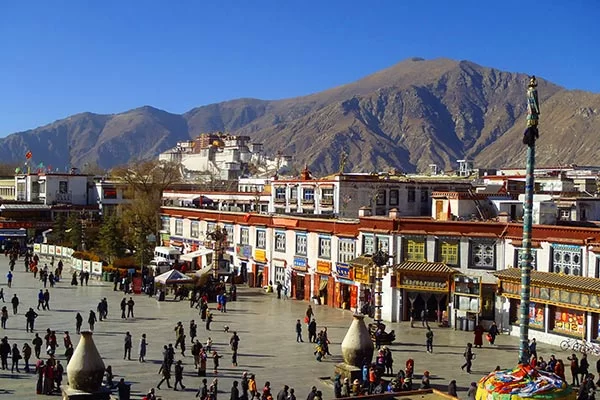
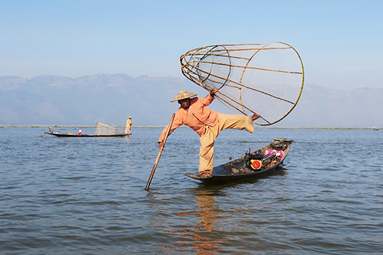
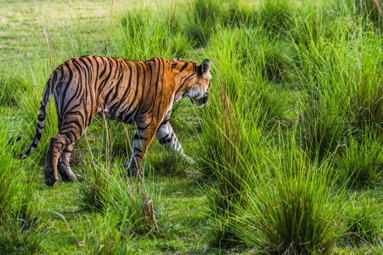
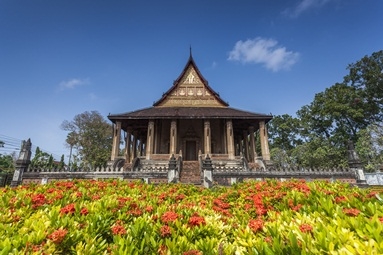
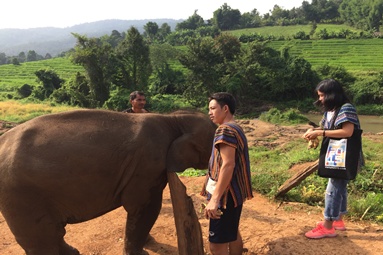
Reviews
There are no reviews yet.